This review is unlike any that I have done previously. It is my first Zeiss review, and other than the new $4000+ Zeiss 55mm f/1.4 Otus Distagon, this is probably the best Zeiss lens currently available. Those of you are familiar with my review style know that I am frequently trying to evaluate the balance between cost and value. But when you are reviewing a Zeiss lens the paradigm completely changes. Reviewing a Zeiss lens is more akin to reviewing a fine watch or a piece of jewelry. Practical value takes a backseat to beauty and artistic merit. People don’t buy Zeiss lenses because they are cheap; they buy them because they want the best.
The 135mm f/2 Apo Sonnar T* ZE is not a lens you buy on a whim or for a single job; it’s a lens that you buy for life. It is constructed to last a lifetime (in Japan, not Germany – ???), and really, the longer you keep it (and continue to produce stunning images with it), the more its intrinsic value will rise. It is a very well-crafted optical tool, and everything looks and feels quality about it. Those who value fine craftsmanship will appreciate the Zeiss. It has a beautiful semi-gloss sheen on its minimalistic barrel. It is solid and heavy (32.8oz/930g), which makes it nearly a quarter heavier than the Canon EF 135mm f/2L USM Lens (26.5oz/750g). These photos will give you a sense of the size comparison with the 135L. Note the Zeiss does change length during focus (quite significantly) while the Canon is internally focusing and will not change length. One plus on the Zeiss side is that it’s hood is designed in such a way that it fits tightly against the side the lens’ barrel during storage. The Canon hood, by contrast, bulges somewhat and makes the 135L actually bulkier for storage than the Zeiss. Like the rest of the construction, the Zeiss’ hood is all metal and very finely crafted. Its metal (of course!) filter thread accepts 77mm filters, which are fairly large but are also quite common. The lens does not claim weather sealing and has no rubber gasket at the mount (neither does the Canon 135L, for that matter).
The Zeiss is designed to last as long as you (and maybe longer). It is a tool, yes, but it is a premium tool that will give both satisfaction and pride of ownership. As soon as you open the box you will find a checklist where a real person has sat down with your lens and assured that all is as it should be…and then signed their name to affirm it. Those that love beautiful, well engineered pieces of kit will love this lens! It is also a lens that approaches optical perfection…if you nail focus.
Ahh, and therein lies the rub. Many (most) people will pass this lens by for one simple reason: it is a manual focus lens. You can hold the shutter release button down halfway all day and nothing will happen. No motor will magically move the elements into alignment to achieve focus. The responsibility is yours. That being said, things are somewhat different than the experience you might remember with vintage lenses. There is still electronic coupling to the body, and so the aperture iris is controlled from the camera body just like any other lens. There is no manual aperture ring on the lens. Furthermore, the lens does submit all EXIF data to the body along with (and this is a welcome addition) focus confirmation via a beep and the relevant dot/square in the viewfinder lighting up. The latter addition helps significantly when focusing with most modern bodies, as their “stock” focusing screens were not designed with manual focus in mind. Some bodies will allow their focus screens to be exchanged, but other popular models (like the Canon EOS 5DMKIII) do not. Nailing shots with the very shallow DOF allowed by the Sonnar can be challenging, and manual focus is an art form. It bears mentioning that the Zeiss also lacks any kind of image stabilizer.
Unless you are much better at quick manual focus than I, this probably won’t be a great choice for event or sports work. I used it briefly for a recent event I was shooting, and, while I used it fairly successfully, one must develop a certain predictive style to nail shots. I would not personally use it in critical situations like a wedding ceremony. The chance of missing a crucial shot due to missed focus is simply too high.
Premium Image Quality
But all is not lost.

There is something uniquely magical about the experience of shooting with a manual lens. I have a number of old manual everything lenses that I just get “in the mood” for periodically. The shooting experience becomes more organic and less sterile than the “point and shoot” options. I find that I often produce some of my best, most creative work while using a manual focus lens. Because you have time to think, you are often more aware of things like composition, appropriate depth of field, and angle of view. You will probably shoot fewer frames, but your keeper rate may just be higher. The good news is that if you have the time and inclination to be more deliberate with your shooting, the Zeiss will reward you with some truly stunning images. It’s optics are monstrously good.
I will make a few comparisons with a very logical competitor for Canon shooters, the EF 135mm f/2L lens. The 135L, despite its advancing years, is treasured by many Canon shooters like myself for its great sharpness, amazing bokeh, and very fast focus speed. It produces images that have an intangible special quality, and has been my favorite portrait lens. But it is not a lens without flaws. It does have some issues with CA (chromatic aberrations), and while sharp in the center wide open, that same sharpness does not extend to the extreme corners. It isn’t entirely resistant to flare, and when stopped down bokeh highlights become more hexagonal than round.
The Sonnar is without question superior in its optics in all of these areas. It is extremely difficult to find fault with the image quality, as it is, in a word, magical. When focus is nailed it is bitingly sharp, its color rendering is exquisite, and the “drawing” of the defocused region both before and beyond the plane of focus is utterly creamy and smooth. CA is virtually nonexistent, and the sharpness extends out towards the edges of the frame, allowing any composition one desires. The lack of CA means that you can shoot in just about any lighting situation without fearing your image being destroyed by harsh lighting transitions and color fringing. I was also reviewing the older Sigma 50mm f/1.4 DG prime lens (not the new ART series lens) at the same time, and in all honesty the Zeiss probably ruined me for that lens. The Sigma has SO MUCH green fringing and a utter lack of micro contrast that we kindly call “dreamy” rendering. Uggg…
Compared head to head with the Canon 135L at high magnification levels the Zeiss very obviously has an advantage in micro-contrast, sharpness, and has less chromatic aberrations. In this test I used a tripod, manually focused both lenses using 10x Live View, and shot the sequences within about 8 minutes so that the lighting would be uniform. The variables should be fairly constant. The wide open shots (f/2) look noticeably sharper and more contrasty at 1:1 magnification. The Zeiss produces slightly more creamy bokeh, and the bokeh highlights remain round a little longer than on the Canon as you step down, although the aperture blades are not completely rounded on the Zeiss. The Canon, by contrast, will start to produce hexagonal bokeh shapes when stopped down more than two stops.
But the true story is shown when you zoom into 1:1 magnification on the f/2 (wide open) samples:

I was simply floored at how much more the Zeiss out-resolves the already excellent Canon. I thought the Canon was sharp, but compared to the Zeiss…just wow! The difference in micro-contrast is equally staggering. Chart testing is not part of my review process, but this comparison done by my friend Bryan Carnathan makes clear just how much better the Zeiss is in both sharpness and micro-contrast.
This shot shows the absolutely gorgeous subject isolation that the Zeiss is capable of.
It also highlights another very high point of the Zeiss; it offers a very, very useful minimum focus distance and maximum magnification. The minimum focus distance is only 31.5″ (800mm) compared to a minimum focus distances of 35.4″ (900mm) on the Canon. That translates into a .25x maximum magnification compared to the Canon’s .19x. I have always found the minimum focus distance useful on the Canon for tightly framed headshots and even as a pseudo macro lens with extension tubes, so I was very delighted with the even greater capacity of the Zeiss. With extension tubes this could serve as a very nice macro lens replacement (where manual focus is often a benefit), and it’s performance here is best in class. (It is best in class in every optical category, for that matter.)
Perhaps more important is this means that a portrait photographer can frame headshots as tightly as just about anyone will be comfortable with! Minimum focus distance should almost never be an issue.
Oh, and take a look at the resolution…
I’m of the opinion that adding softness to a portrait is always easier than adding sharpness! I would rather start with a sharp image and reduce that sharpness in post if necessary.
It would be wrong to not take a moment and dwell on the incredibly smooth bokeh (out of focus area) produced by the Zeiss. It is incredible! It “draws” beautifully, with the out of focus regions before and after the plane of focus soft and creamy. The utter lack of chromatic aberration means that the bokeh highlights are not harshly outlined. The narrow depth of field created by the large aperture produces great subject isolation. The end result is that this lens seems capable of making just about everything look good! Even very simple subjects are beautiful because of the optical quality. Here is a little gallery to feast your eyes on.
The Zeiss also has no observable distortion – lines stay perfectly straight.
But despite all of this optical goodness, the Sonnar is unlikely to replace the 135L for many shooters for that one practical limitation – the lack of AF.
Manual Focus Only
That leads us to a discussion of the practical reality of focusing a Zeiss lens. The experience is not dissimilar to the process of focusing some of the premium lenses from the manual era. Like many of the Asahi Takumar lenses of the 60s and 70s, the construction of the lens is all metal and glass. There is no rubberized grip on the focus ring, nor really a dedicated ring in the traditional sense. There is a ribbed section on part of the body that provides the grip for focusing, and it is (like most everything on a Zeiss lens), precision crafted metal. The majority of the lens body is dedicated to the business of focusing, and, as is appropriate, the focusing action is near perfect. It is beautifully damped with just the appropriate amount of resistance. The range of movement from minimum focus to infinity is not insignificant, so be prepared to twist fast if rapid focus shift is required. I was actually surprised by the length of the focus throw. It seems to take a long time to get from close to infinity focus. The lens barrel extends as you get closer to macro focus. The trade-off, of course, is a high degree of precision while focusing. The focus confirm chip (causing the suitable red AF point to light up along with a small confirmation “beep”) is a big help in nailing focus.
In my own personal experience I found that I preferred shooting subjects in close to medium range where I felt more confident that I could judge accurate focus with my eye. I found that I personally missed focus slightly more often with longer distance (outside of 25 feet) shots. That is probably a personal shortcoming. Overall, however, my keeper rate was very high. I added a high number of images to my portfolio that I am very proud of.
The Zeiss serves as an excellent portrait lens. It provides fantastic subject isolation and delineation, and of course the color and beautiful bokeh rendering makes for an excellent performer. It has that “magical” quality portrait photographers love so dearly. With familiarity I feel that most portrait photographers would probably quickly forget that the lens is manual focus only, and in many cases the more still nature of the subject means that nailing focusing is not overly difficult. I love using some of my manual vintage glass in just this kind of setting. And if you are a tripod shooter (which I rarely am), a manual focus lens becomes even less of an impediment.
Crop Sensor Observations
I did mount the Zeiss via adapter on my EOS M body for an afternoon. I wanted to experience it on a crop sensor (where it acts as a 216mm f/2.8 prime) and also experience what the focus would be like for those that use it on a mirrorless body. The focusing experience changes slightly, as one ceases to worry about focus confirm and concentrates more on visually achieving focus (perhaps aided by the magnification tool on the screen). The focusing process was fairly easy and really only restricted by the awkward balance that requires you to primarily support the lens with the hand that you typically use for focus. The results show me that crop shooters will also be happy with this lens for its nearly perfect optics and gorgeous drawing.
Who Is It For?
The final group that will really be interested in the Zeiss are videographers. Many of you prefer Zeiss lenses not only for their build quality but also for the fact that the lens is designed around manual focus. For many lenses the manual focus aspect is an after thought, but not so with a Zeiss. Zeiss lenses also have a slightly cool color rendering that is naturally very cinematic.
Is it good? Oh yes, it is very, very good. But the big question for many shooters at this juncture will be, “Is it twice as good?” Because despite the lack of AF and the stellar reputation of the 135L, the Zeiss easily costs twice as much. At the moment, the Canon sells for $1089 from my friends at B&H and the Zeiss rings in at $2122. While on that subject, let me offer up a small niggle: the Zeiss comes with no protective case despite its premium price. It has the lens hood, a few papers in the box, and that’s it. My Lowepro 2S case fits it nicely, but that exact case is no longer available. Surely Zeiss could throw in something to help protect this gorgeous lens! (Finally, one place where the lowly Sigma wins!)
But back to reality. Few potential Zeiss buyers are looking at it for the “value”. You are considering this lens primarily because it is the best.
And it is that.
It’s optics are noticeably better than one of the best medium telephoto lenses out there. It is built like a fine Swiss watch. I loved looking at the front element and the shiny metal filter ring, not to the mention the smooth, glossy finish of the barrel. If you are the type of person that needs the best, look no further. If you are a person who doesn’t mind being a little more deliberate, and, dare I say, artful, in your approach to shooting, you will find the Zeiss an absolute delight.
Will it be replacing my 135L? Probably not. Until I shot with the Zeiss I thought the performance of the 135L was fantastic, and I will still enjoying shooting with it. I knew that the Zeiss would be better before I did the review, although I was surprised by just how noticeably better it was in head to head comparison. But for many of the applications that I use the 135L in, I need the AF. But I’m also not a full time professional photographer, and frankly, there are a few higher priorities for that kind of money in my kit at the moment. I’ll keep using my trusty Canon, but I will cherish the images that I took with the Zeiss. And one day, there WILL be a Zeiss lens in my kit. They are just too good.
Is the Zeiss worth the money? That, my friend, is up to you. Do you have to have the best?
Pros and Cons
Pros:
• Stunning build quality
• Even more stunning optics
• Virtually nonexistent CA
• Sharpness extends to edge of frame
• Gorgeous bokeh rendering in both the fore and the back grounds.
• Flawless focus action
• Gorgeous color rendition
• One of the best lenses on the planet
Cons:
• Manual Focus only
• Price!
• No image stabilizer
• No protective case included
• Heavy (but in a good way).
I have presented images in this review that have not been processed in any kind of significant way. They were shot RAW, but have received only standard conversions. If you would like to see more images, including some favorites processed in my typical style, please visit the image gallery here:
I reviewed a retail copy of the Zeiss APO Sonnar T 2/135mm ZE provided by my friends at B&H Photo (thanks!). Please support them when you purchase, and by purchasing through the links in this article you help to keep this website going and current. Thank you!
Gear Used:
Canon EOS 6D DSLR Camera (Body Only)
Zeiss 135mm f/2 Apo Sonnar T* ZE Lens for Canon EF Mount
Canon EF 135mm f/2L USM Lens
EOS M Mirrorless Digital Camera with 18-55mm Lens and Flash Kit (Black)
Adobe Photoshop Lightroom 5 Software for Mac and Windows (Boxed Version)
Adobe Photoshop Creative Cloud 1-Year Subscription
Alien Skin Exposure 6
Purchasing your gear through B&H and these links helps fund this website and keeps the articles coming. Thank you for your support.
Great News! I can now offer a 5% discount on all purchases at Amplis Foto, Canada’s Leading Photographic Supplier. Please enter discount code: AMPLIS52014 in your cart. It is good for everything in your cart, and is stackable with other coupons, too! It will take 5% off your entire order! Proceeds go towards keeping this site going and providing you with new reviews!
Error: Contact form not found.




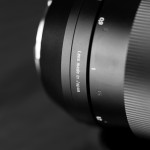
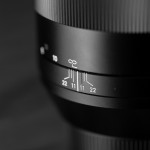
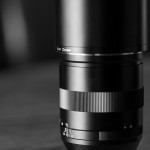

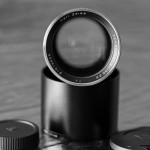

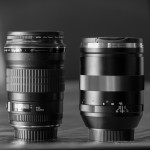

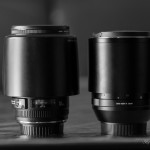
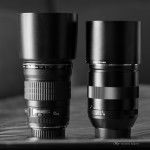
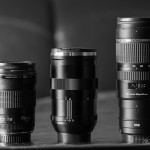






























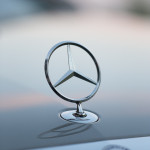





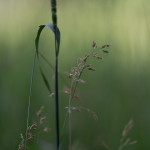
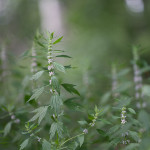











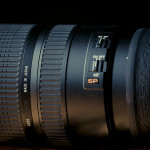

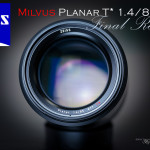
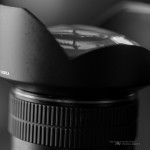
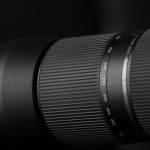
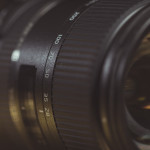
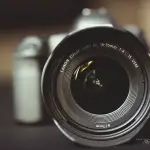
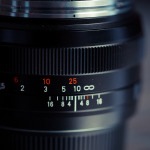

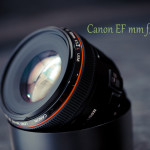
This is why I sold all my Canon gear and bought a Sony A99. I have the two Zeiss zooms, 16-35mm f/2.8 and the 24-70mm f/2.8, and the 135mm f/1.8 will be my next purchase. 🙂 Awesome Zeiss micro contrast, and auto-focus, and in body image stabilisation. Now I just look at all my colleagues who use Canon or Nikon and feel a bit sorry for them really.
Kind regards,
Jason.
Jason, Sony is doing a lot of innovative things, but from what I understand, most of their Zeiss branded products are not actually made by Zeiss, and the 135mm f/1.8 is not quite in the same class as this lens optically. That being said, I know of several photographers that have made the switch from Canon or Nikon to Sony and are very pleased for having made that change.
Great review and some nice images. I am actually looking for this lens because of its optical quality. Zeiss puts Canon and Nikon to shame because they show how a good lens should be like. In comparison most Canon and Nikon lenses are just crap. Maybe Nikon and Canon think so as well and give their lenses an adaquate build 😉
I shoot a Nikon D810 and with the few good lenses the sensor is stunning. But on the Nikon side i only can recommend the 200 f2 if you want the best sharpness, color and overall rendering. The new 1.8 lenses are all sharp but thats about it.
I love this lens. 135mm has been a favorite (though seldom used) focal length of mine since the 1980s, and after going without one since going digital, I was delighted to find this lens.
I use it on a Canon 6D with the S precision matte screen, which helps greatly. I don't use it often, but when I do, it never ceases to amaze.